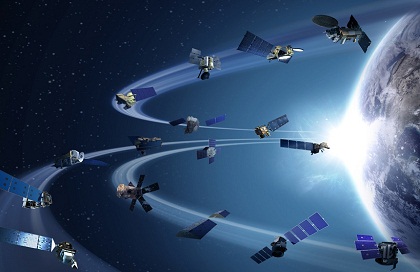SOURCE: AFI


The Cabinet Committee on Security (CCS), chaired by Prime Minister Narendra Modi, has approved the third phase of India’s Space-Based Surveillance (SBS) mission, a critical step toward enhancing the country’s land and maritime domain awareness. This initiative, aimed at both civilian and military applications, will significantly bolster India’s surveillance capabilities, allowing for greater monitoring of both domestic and international activities across land and sea borders.
The ambitious proposal involves the launch of at least 52 satellites into low Earth orbit (LEO) and geostationary orbit (GEO). These satellites will serve a wide array of surveillance functions, including monitoring enemy movements and tracking infrastructure developments in regions of strategic interest to India. The total cost for this extensive surveillance program stands at ?26,968 crore.
In an effort to tap into the expertise of both government and private sectors, the Indian Space Research Organisation (ISRO) will construct and launch 21 satellites, while the remaining 31 satellites will be developed and deployed by private companies. This collaboration highlights the growing role of India’s private space sector in national defense and technological advancement.
India’s decision to ramp up its space-based surveillance capabilities comes at a time of heightened tensions and geopolitical shifts in the Indo-Pacific region. One of the key focuses of this program is to detect enemy submarines operating in the Indo-Pacific waters. With China’s growing presence in the region, the Indian government is taking proactive measures to safeguard its maritime interests, ensuring that any potential threats from hostile submarines can be detected and countered swiftly.
In addition to enhancing maritime awareness, these satellites will also track infrastructure construction by India’s adversaries along its land borders. This includes monitoring developments along the contentious Line of Actual Control (LAC) with China, where construction of new roads, airstrips, and military outposts has been a cause for concern in recent years. Similarly, surveillance along the Pakistan border will help India stay ahead of any new defense-related infrastructure projects that could impact national security.
While the primary focus of the SBS Phase III mission is on enhancing military preparedness, these satellites will also support civilian applications. They will provide critical data for natural disaster management, environmental monitoring, and infrastructure development. The ability to track weather patterns, monitor forest cover, and assess agricultural outputs will help the Indian government make informed decisions in areas like food security, urban planning, and disaster preparedness.
The satellites will also improve communication and navigation services for the Indian armed forces, facilitating secure and seamless operations in remote regions.